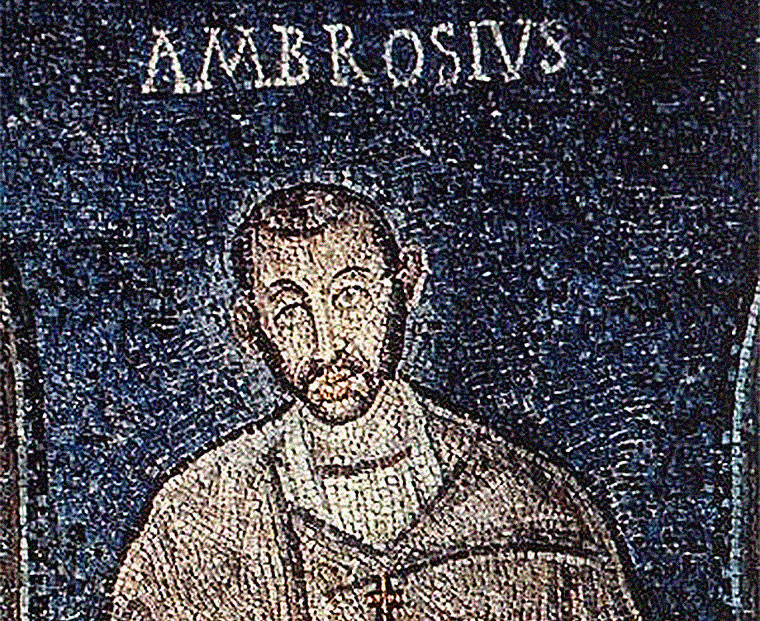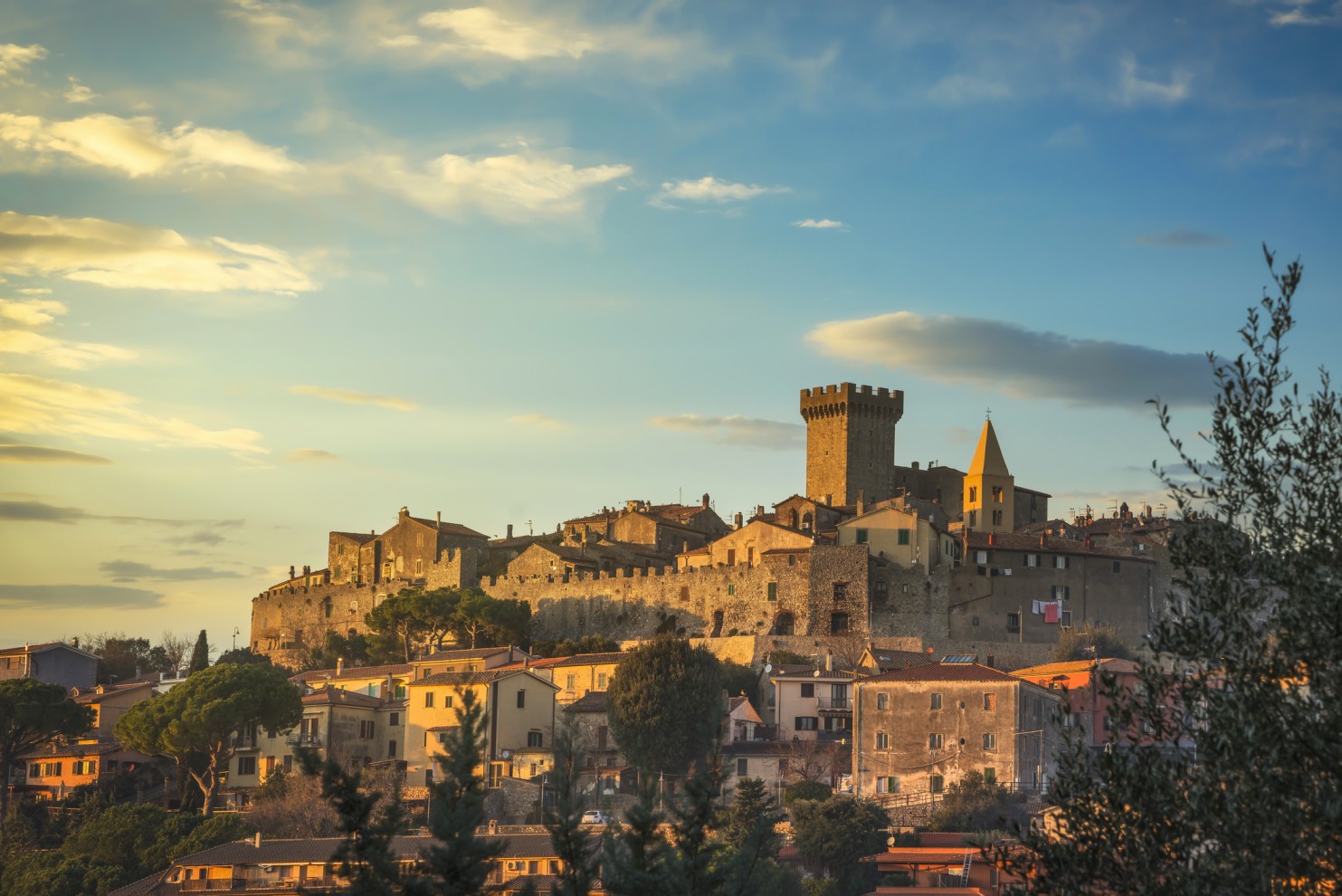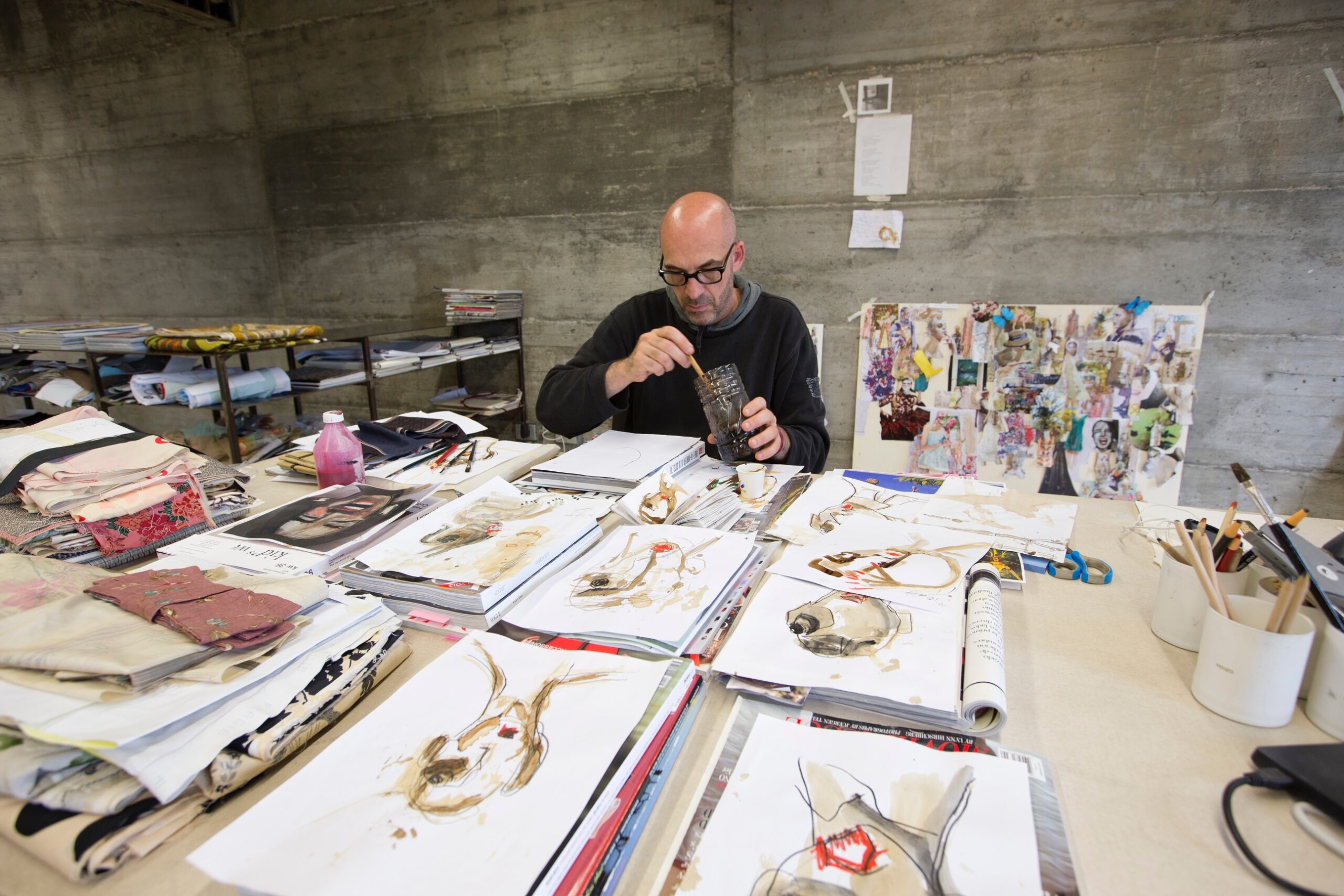St. Ambrose died in 397 but the world of Ambrogio lives on today in Milan.
He was mourned by thousands at his funeral on a snowy night. Women sang his hymns. Fog was thick, shrouding Mediolanum, the ancient name for Milan, as Ambrose’s body headed to his basilica.
“Follow him,” shouted a man pointing at his coffin as the fog cleared. “Even though he is dead, he shows us the way.”
Ambrose is not only the patron saint of Milan, he was one of the four original doctors of the Catholic Church.
Milanese celebrate his feast on December 7, the day when La Scala Opera House traditionally opens its season, a time when the traditional Christmas fair in Milan called “Oh Bej!, Oh Bej!” (in Milanese, “Oh So Nice!, Oh So Nice!”) begins and lasts until the following Sunday, and when the mayor of Milan awards the Ambrogino d’Oro (a gold medal named after Ambrose) to the most influential Milanese of the year.
Those are just some of the events that celebrate the saint’s profound impact on Milanese culture. Nobel Prize Winner Dario Fo wrote that Ambrose “invented” Milan. The city even today is much more Ambrosian than we think. What the city holds important was shaped in Ambrose’s times, when Mediolanum was a military, political and creative power crossed by more than 10 rivers, had 50 towers, a 7,000-seat performing arts theater and a magnificent thermal spa.
Born around AD 339, in Trier, Germany as the son of the Roman prefect of Gaul, Ambrosius studied law and politics, and by 370, had become the Imperial governor of Northern Italy.
When the Episcopal see of Mediolanum became vacant in 347, he was made bishop of the city by popular acclamation. A man of keen intellect, he spoke so inspiringly that a boy yelled: “Ambrose for bishop!” In only a moment, everyone backed Ambrose, who became bishop just few days later on December 7 of 347.
His life in Milan was an inspiring example of Catholic fidelity, spiritual honesty and consistency. He taught and admonished with all his energy against the heresy of Arianism. He was a fierce opponent of hypocrisy. He battled to maintain the independence of the church from the state and bravely denied the Roman Emperor Theodosius I the Eucharist, then excommunicated him for massacring civilians in Thessalonica.
Ambrogio was also a seminal urbanist for Milan. He had four basilicas built, each strategically placed on roads entering the city from the north, south, east and west. They are still part of the great Ambrosian spiritual heritage. The Basilica of Martyrs — today known as Basilica of St. Ambrose — remains one of the most important among Lombard’s Catholics. He is buried in the crypt below the main altar together with the early martyrs Gervasius and Protasius.
Theologian and philosopher, Ambrose also wrote profound treatises on spiritual life and important theological works such as De Sacramentis and De Spiritu Sancto.
As the bishop of Milan, he was instrumental in the conversion of St. Augustine, who expressed the desire of being baptized by Ambrose himself.
Ambrogio the poet and composer also had a deep impact on sacred music through the composition of 14 beautiful hymns. They are known as the Ambrosian chants that live on today in the Milanese Church.
“The Ambrosian chant is amazingly ancient, even more ancient than the Gregorian chant,” says Maestro Giovanni Scomparin, musician, researcher and global popularizer of the Ambrosian chant (www.ambrosianchant.com).
“The Ambrosian chant is inextricably connected with liturgy. Ambrosian hymnary is the real treasure of the Ambrosian rite, which is the oldest,” he says. “My American friends should discover the Ambrosian chant for themselves. It’s among the hidden gems and best-kept secrets of our city.”
When sung today the pure tonal sounds recall a golden archaism in a world of chaotic modernity. Deeply moving, they evoke spiritual feelings even in non-religious persons.
Ambrogio introduced the antiphonal, alternate mode of singing with his own hymns.
“Characterized by unsurpassed spirituality, the Ambrosian chant derives from the Byzantine tradition, with its particular Eastern Orthodox complexity. A sense of peace infuse your being when you listen to it,” says Scomparin.
St. Augustine wrote that Ambrose introduced the hymns to “be sung according to the fashion of the East”. St. Augustine was himself mesmerized by the music. “The voices flowed into mine ears, and the Truth distilled into mine heart, whence the affections of my devotion overflowed, and tears ran down, and happy was I therein,” wrote the author of The Confessions.
“The Ambrosian chant has a more complex melodic structure and different graphic notation derived from the Lombards,” says Scomparin. “We as Milanese are so proud of our Ambrosian tradition”.
Ambrogio was a Renaissance man long before that historic time. He still offers great insight into modern thinking. Today Milanese cultural institutions including the Biblioteca Ambrosiana along with thousands of businesses continue to be inspired by him.
“Fare le cose all’ambrosiana” is an expression that means working hard and working well.

































